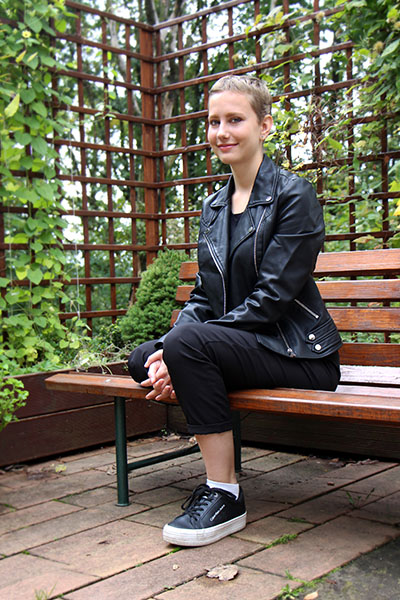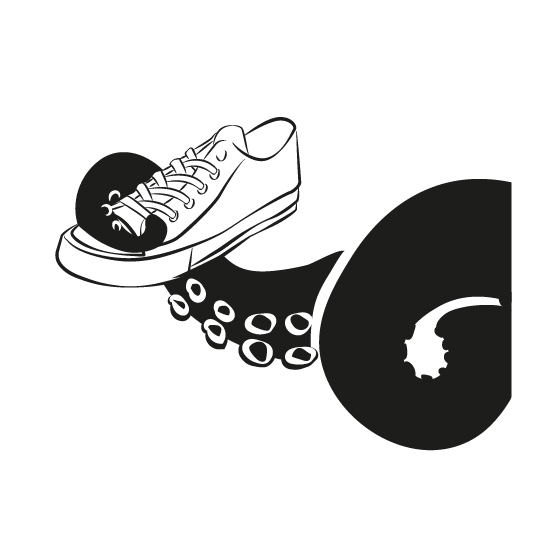Hello, my name is Kateřina, and this year I celebrated my twentieth birthday in an unusual way - I had to get my right leg amputated to the thigh. This is my way of trying to raise money for the Genium X3 prosthesis from Ottobock, which would allow me to return to my normal life. This is my whole story.
At the age of twelve, I joined the Czech-German scholarship project at the Friedrich-Schiller-Gymnasium in Pirna, so I studied in Germany for six years. When I was seventeen, I found a small lump below my right knee. From a general practitioner to an orthopedist, I made it all the way to pediatric oncology in Motol. But no one really knew what the lump actually was. I underwent several surgeries to remove the lump, but it kept coming back. So the oncologists chose radiotherapy as the next procedure, which I had to go through just before my A-levels. Luckily, I was able to return to school in time and successfully complete high school. And the lump problem was solved for me … for the time being.
I have a passion for animals and the ocean, so I decided to study marine biology in England. I entered the University of Essex just before Brexit, therefore I could apply for the pre-settlement status and thus get a student loan.
Apart from Covid-19 making life complicated for absolutely everyone, I was doing well in England, until I touched my right knee one day and the lump was back. But at that moment, I was already nineteen and had to switch from pediatric oncology to adult oncology.
A travelling madness started. Instead of buying wetsuits and diving equipment, I used the money from my part time job and placement to pay for flight tickets from London to Prague and back, to cope with doctors’ appointments and my lectures.
At first, it was nearly impossible to diagnose the lump and because of that, the course of further treatment was unclear. Therefore, we decided to turn to other specialists. This got me all the way to Brno, to the head of the children's oncology department of the university hospital, where the lump was finally diagnosed. But thereafter, the approach took a diametrically different direction. From a semi-malignant oncological diagnosis of an uncertain nature to a high-grade soft tissue sarcoma, from radiotherapy to chemotherapy, from repeated cookie cutting on my knee to a high amputation of my right leg. There was no other way, amputation was the only solution. So, instead of nice holidays by the sea, I was going to the hospital for half a year and dropped around eight kilos (literally…). Despite this, I completed my second year of university normally. My main goal was to go back to school and continue doing what I enjoy. The next step after amputation was to learn how to walk with a prosthesis and I only had a few weeks to do so (before the third year of university started). I naively thought that I would put the prosthesis on and walk away wearing it. Obviously I know how to walk, right? Well evidently not! As I soon found out, it takes time… and patience is not my biggest strength. I therefore spent the next fortnight at a rehabilitation centre for amputees Malvazinky in Prague. In the end, I managed to start the third year of university on time.
I am very grateful that I was able to borrow the prosthetic knee C-leg because the insurance company only pays for the mechanical prosthesis as the initial equipment in the first year after amputation. The C-leg is a much better prosthesis with a microprocessor that can adapt to walking and has many functions. From the insurance company's side, this is the maximum they can approve. Unfortunately, the C-leg is not waterproof so I can't allow it to get wet (which is difficult with English weather) and it restricts mobility and hinders my ability to walk upstairs.
Whether it's working on a boat, wading in a river, or trudging through mud, water is an essential part of my life. Therefore, I need a special water-resistant bionic prosthesis, the Genium X3 from Ottobock, which would allow me to return to my normal life. Not only it is waterproof, but among other things, it can also walk up stairs, which would be a huge advantage considering that there are 80 stairs leading up to our house.
But unfortunately this prosthesis is not covered by the insurance company. That's why I decided to connect with non-profit organizations and find sponsors to help me raise funds so that I could fully devote myself to marine biology, even without a leg.






